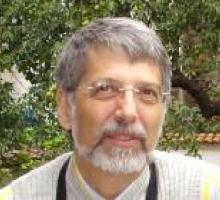Simulation and experiment on electric field emissions generated by wireless energy transfer
- Citation:
- Baikova, {E. N. }, L. Romba, R. Melicio, and {S. S. } Valtchev, "Simulation and experiment on electric field emissions generated by wireless energy transfer", Technological Innovation for Resilient Systems - 9th IFIP WG 5.5/SOCOLNET Advanced Doctoral Conference on Computing, Electrical and Industrial Systems, DoCEIS 2018, Proceedings: Springer New York LLC, pp. 243–251, 1, 2018.
Date Presented:
1Abstract:
This paper presents a wireless energy transfer (WET) system operating at the frequency of tens of kHz. It treats the modeling and simulation of WET prototype and its comparison with experimental measuring results. The wireless energy transfer system model was created to simulate the electric field between the emitting and the receiving coils, applying the finite element method. The results from the simulation are compared to the measured values of the electric field emission from the wireless energy transfer equipment. In the recent years the interest in the WET technology, especially for the electric vehicles (EV) batteries charging, is rapidly growing. The WET systems pollute the environment by electromagnetic emissions. Due to the expanding use of this technology in industrial and consumer electronics products, the problems associated with the electromagnetic compatibility (EMC), and the adverse impact on the human health becomes highly important.
Notes:
info:eu-repo/grantAgreement/FCT/5876/147324/PT# This work was funded in part by the Center of Technology and Systems of Uninova and the Portuguese FCT-PEST program UID/EEA/00066/2013.
